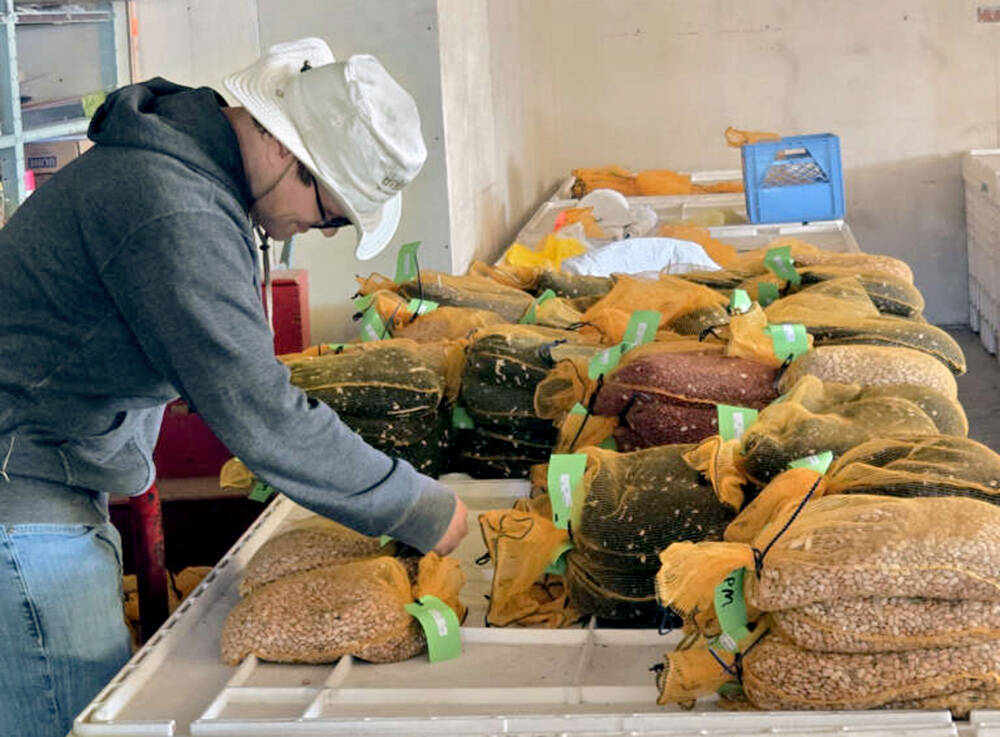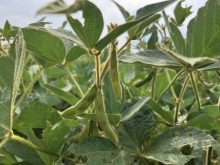The pace of plant breeding has quickened by leaps and bounds, from selective breeding to the use of transgenics.
Yet the process of breeding seeds with desired traits, rechecking for trait and yield performance and increasing those numbers for commercial availability takes more than 10 years.
Or does it?
Read Also

Bean research breeds community giving
University of Guelph dry bean researcher Dr. Mohsen Yoosefzadeh Najafabadi champions sustainability by donating surplus breeding program beans to support food security and community art initiatives.
With the use of continuous nursery locations in South America, the Caribbean and testing sites across North America, it’s now possible to concentrate the work done in 13 years into just five.
Why it matters: Reducing breeding times means seed companies can develop varieties and traits more quickly to meet market demand.
That was the story presented by David Lee, soybean breeder at Syngenta, during the company’s showcase in late August at its Arva Research Station near London.
Lee talked of Syngenta’s 50-year record for breeding soybeans, allowing it to develop germplasm for yield, disease and resistance.
Traditionally, selective breeding entailed combining two existing varieties using tweezers and moving pollen from one flower to the other.
“We used to do trials here during my first 20 years,” says Lee. “I’d spend the month of July lying out in a field with tweezers making pollinations.”
Now all crosses are done in Chile, with parent lines selected for yield, disease and herbicide traits. That’s done in November in Graneros, south of Santiago or north of Arica. Graneros is in an area of fertile soils and flat land. Arica is in a desert, where everything is grown in greenhouses with soil adjusted to raise the organic matter.
Developers do crosses from January to February with the expectation of getting 10 to 15 seeds per population in thousands of different populations.
“It’s a lot of manual labour,” says Lee, adding that those 10 to 15 seeds from each population go to Arica or Puerto Rico.
“We call them continuous nursery sites because they’re constantly planting seeds and they can get three generations of seed per calendar year.”
Using the facilities in Chile and Puerto Rico means F1, F2 and F3 generations can undergo more tissue sampling for DNA markers to determine presence of desired traits. Herbicide traits and insect resistance are other targets, as is the major gene for Phytophthora root rot.
For now, there’s nothing for white mould, although researchers are working on predictive models.
The process
Lee started 2023 with F1 seeds in Chile and Puerto Rico, and those were due for harvest last August. The team did some molecular marker analysis to ensure the cross was successful. Then they’ll be harvested and replanted with further tissue sampling from the F2 generation. Those will be harvested in December and January, planted back as the F3 generation and harvested in April.
In all, they take two to three million tissue samples each year.
The spring of 2024 will be the first time they see these materials in North America and those will be grown in “plant pull centres.”
“We have thousands of populations and may pull 50 to 100 plants from each, and those plants could be a new potential commercial variety,” says Lee. “We have hundreds of thousands of potential new varieties, conventional and traited materials.”

They’ll pull those next summer, but only a select few will be sent for the first yield testing in South America and grown in one-row yield plots. Those with early maturities will go to Graneros and anything longer will be sent to a centre in Argentina.
Approximately 95 per cent of lines will be dropped and each row of plants will be tissue-sampled to confirm they have the traits needed for a commercial variety. Those will be brought back to North America for Stage 3 testing.
“I’ll have multiple location yield-testing with eight to 10 replications, with three or four in Ontario and four or five in the U.S. Midwest,” says Lee. “I’m responsible for Group 1s and that’s for Ontario and Quebec and also for Minnesota and South Dakota.”
In summer 2025, they’ll do a small seed increase and plant 800 seeds with the “line maintenance group”, monitoring flower colour, plant height, pod pubescence colour and ensure they’re uniform varieties with no concerns. That fall, they’ll advance a select few to Puerto Rico for another increase; 8,000 to 10,000 seeds with some planted in November for harvest in February. From there, they’re sent to Homestead, Florida.
“In Florida, they’re planting five or six acres of seed there, so that gives us a large increase,” says Lee. “That’s harvested in April, then they come back to the U.S. Midwest for a larger increase.”
By 2026, there’ll be 25 to 35 locations in the U.S. Midwest. The focus is to regionally pinpoint where these varieties will perform best. At the end of 2026, they’ll have 4,000 units of seed.
By 2027, they’ll have another year of testing and from there, a commercial launch with 100,000 units of seed for sale.
“It’s interesting that when we pull plants, we get 65 seeds of a new variety,” says Lee. “From 2024 from 2027, we go from 65 seeds of a new variety to 100,000 units and it all starts from one simple cross.”













